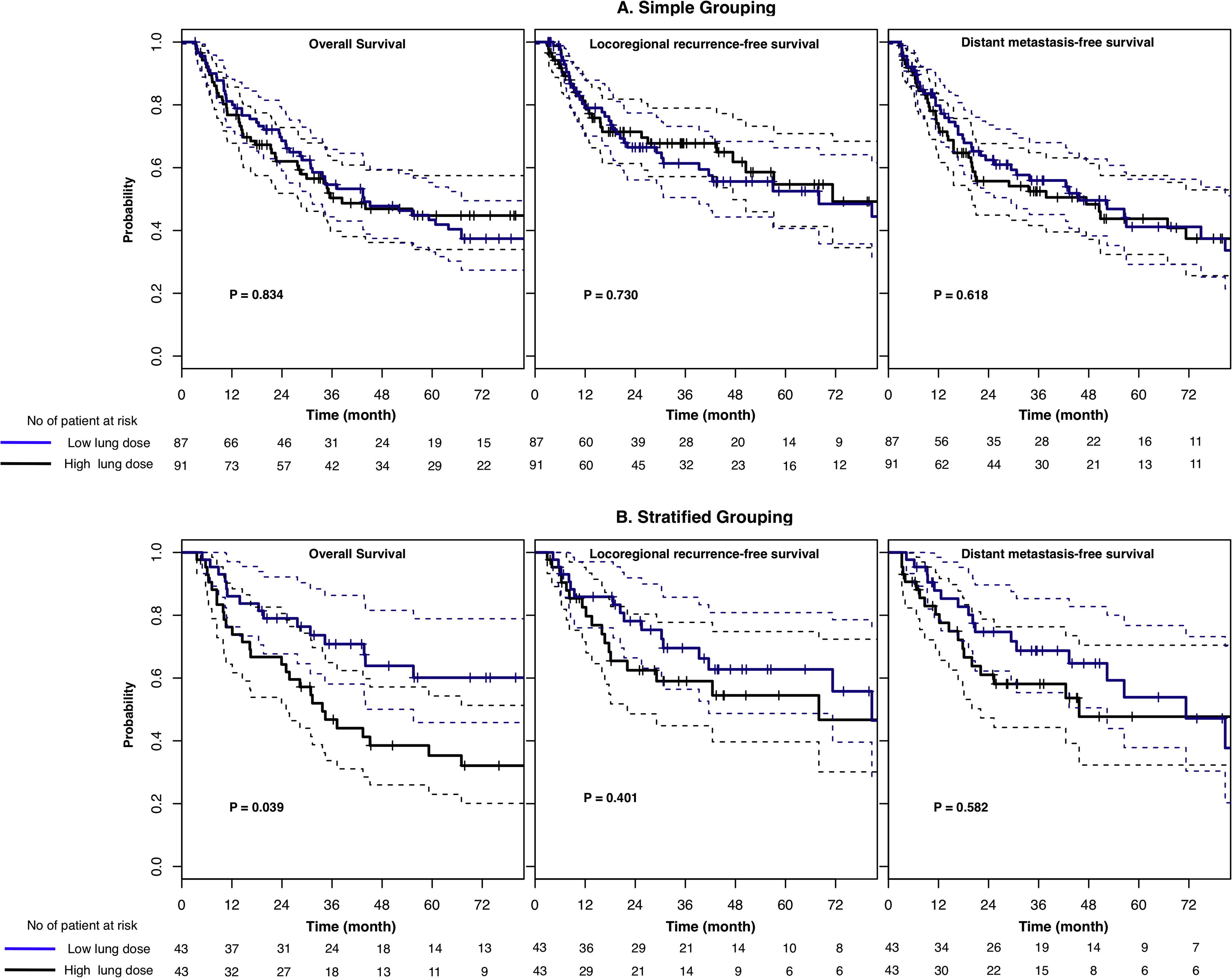글로벌 연구동향
방사선종양학
- [Radiother Oncol.] Lung dose and the potential risk of death in postoperative radiation therapy for non-small cell lung cancer: A study using the method of stratified grouping.
아주대 / 허재성, 노오규*
- 출처
- Radiother Oncol.
- 등재일
- 2018 Oct
- 저널이슈번호
- 129(1):61-67. doi: 10.1016/j.radonc.2018.03.018. Epub 2018 Apr 20.
- 내용

Abstract
PURPOSE:
Postoperative radiation therapy may have a detrimental effect on survival in patients with non-small cell lung cancer. We investigated the association of the lung radiation dose with the risk of death in patients treated with postoperative radiation therapy.METHODS:
We analyzed 178 patients with non-small cell lung cancer who received postoperative radiation therapy. The mean lung dose was calculated from dose-volume data, and we categorized patients into the high and low lung dose groups using 2 different methods; (1) simple grouping using the median lung dose of all patients, and (2) stratified grouping using the median lung dose of each subgroup sharing the same confounders. We compared clinical variables, and survival between the high and low lung dose groups.RESULTS:
In the simple grouping, there were no significant differences in survivals between the high and low lung dose groups. After stratification, the overall survival of low lung dose group was significantly longer than that of high lung dose group (5-year survival, 60.1% vs. 35.3%, p = 0.039). On multivariable analyses, the lung dose remained a significant prognostic factor for overall survival (hazard ratio, HR = 2.08, p = 0.019).CONCLUSIONS:
The lung dose was associated with the risk of death in patients with non-small cell lung cancer having the same confounders. Further studies evaluating the risk of death according to the lung dose will be helpful to administer more precise and individualized postoperative radiation therapy.
Author informationHeo J1, Noh OK2, Kim HI1, Chun M1, Cho O1, Park RW3, Yoon D3, Oh YT1.
1
Department of Radiation Oncology, Ajou University School of Medicine, Suwon, Republic of Korea.
2
Department of Radiation Oncology, Ajou University School of Medicine, Suwon, Republic of Korea; Department of Biomedical Informatics, Ajou University School of Medicine, Suwon, Republic of Korea; Office of Biostatistics, Ajou University School of Medicine, Suwon, Republic of Korea. Electronic address: okyu.noh@gmail.com.
3
Department of Biomedical Informatics, Ajou University School of Medicine, Suwon, Republic of Korea.
- 키워드
- Lung dose; Non-small cell lung cancer; Postoperative radiotherapy; Risk of death
- 연구소개
- 비세포성폐암의 수술후 방사선치료는 국소조절 및 생존율을 높이는 목적으로 시행되지만, 폐선량으로 인한 잠재적인 사망 위험이 있는 것으로 알려져 있다. 하지만 폐선량에 따른 잠재적 사망 위험의 상관성은 여러 교란 변수들에 의해 상쇄되어 쉽게 드러나지 않는다. 본 연구는 이러한 교란변수를 보정하는 계층화 그룹핑(stratified grouping) 방법을 사용하여 폐선량과 잠재적 사망 위험의 상관성을 규명하였고, 향후 방사선치료의 효율을 최적화하는 더 정교하고 개별화된 맞춤치료를 시행하는 데 활용될 수 있을 것이다.
- 덧글달기
- 이전글 [Radiother Oncol.] Comparison of radiation therapy modalities for hepatocellular carcinoma with portal vein thrombosis: A meta-analysis and systematic review.
- 다음글 [Radiother Oncol.] Clinical significance of soluble programmed cell death ligand-1 (sPD-L1) in hepatocellular carcinoma patients treated with radiotherapy.









